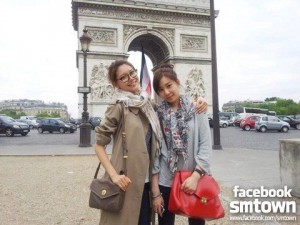 Welcome to this week’s Roundtable!
Welcome to this week’s Roundtable!
Those of us who are international fans of K-pop are all too aware that the news media has the propensity to falsely portray the true scope of Hallyu influence in our home countries. Political agenda aside (which obviously plays a huge factor in the Hallyu propaganda machine), Korean news media in a foreign country is limited in scope not only by a limited comprehension of inner socio-cultural workings, but also by what kinds of experiences (for example, concerts and venues that experience a high volume of K-pop fans) they come in contact with when they go to visit the country.
Given that we can rarely trust the media to give us an accurate assessment of K-pop in our own countries, perhaps the people who can give the best answers would be ourselves!
Our question this week to our global panel of writers is: What is Hallyu’s influence, if any, on your day-to-day life or the people around you? In what ways has the media been accurate or inaccurate about their portrayal of your country (or part of the country) in relation to K-pop?
Gaya: To be honest, I am quite surprised at how much Hallyu has been existing right under my nose. I remember discovering K-pop and telling my sister all about it, only to discover that she knew all of that, almost her entire school knows about K-pop, almost everyone her age knows about K-pop, which rock have I been living under? Wow.
Where do I even start? There are a whole heap of Korean restaurants and grocery stores around Melbourne, and there’s this particular one in the CBD with a poster of Lee Seung-gi that I sometimes make a point of walking past, just to get a glimpse of him. I think I’ll be visiting that store a lot more once The King 2Hearts finishes up. Just wandering around the city, I can sometimes hear K-pop songs playing in stores: there’s even a photo sticker place that plays music show performances on loop. I remember this one time, “Abracadabra” started blaring from a clothing store at full volume just as I was walking past it–it was like it was begging me to start dancing in the middle of the shopping centre. It took all of my self-control, and then some, not to acquiesce.
And it’s not just the streets where I can find K-pop, it’s on my TV too. In Australia, we have our own SBS, or Special Broadcasting Services, which is a partly goverment-funded TV and Radio broadcaster that broadcasts almost anything not in English: news from around the world, films (Bollywood, French and Korean are popular), Eurovision, The World Cup. And every Sunday morning, for two hours, they play Asian pop music videos. SBS Popasia is operated by SBS’ Chinese arm, and they play songs in many different languages including Mandarin, Japanese and Vietnamese, but Korean songs have been dominant thanks to the Hallyu wave.
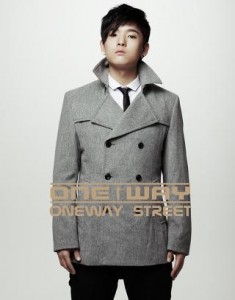 SBS has also been the one covering a lot of the K-pop news. Their main news broadcast ran a story when SHINee first came to Australia in early 2011 to perform at the Australia-Korea Friendship Concert in Sydney, and Popasia was the main media partner for the 2011 K-pop Fest in Sydney in November; they even interviewed SHINee, and I would go as far as to say that SHINee is Australia’s second own K-pop group (the first being One Way, who have two members who used to live in Australia).
SBS has also been the one covering a lot of the K-pop news. Their main news broadcast ran a story when SHINee first came to Australia in early 2011 to perform at the Australia-Korea Friendship Concert in Sydney, and Popasia was the main media partner for the 2011 K-pop Fest in Sydney in November; they even interviewed SHINee, and I would go as far as to say that SHINee is Australia’s second own K-pop group (the first being One Way, who have two members who used to live in Australia).
Actually, the K-pop Fest saw mainstream media in Australia take interest as well: James Tobin became momentarily famous among Cassies when he uploaded a photo taken with TVXQ to his twitter while covering the story for the Sunday edition of breakfast show Weekend Sunrise — a story that was pretty typical of usual K-pop stories from mainstream media (“They spent $400k developing each kid!”), as well as The Age newspaper, which was kind enough to include a photo slideshow of the K-pop Fest too.
Antonia: Lucky you, Gaya. In rural England K-pop is close to non-existent; no restaurants, no radio stations (I can’t even get Seoul FM on the computer most of the time), no TV coverage, nada. It’s like a K-pop black hole. The closest I can get is the tiny Korean corner shop in the nearest big city — and they won’t play Korean songs because it dissuades non-Korean customers. While I know I am only fuelling the stereotype of disinterested country-dwellers in this case it’s pretty true. I wouldn’t go so far to say it’s racism, but amongst all my friends (bar a few from Macau) the general feeling is South Korea is pretty much the same as North Korea, the boys look like girls and the girls all look the same. The excessive autotune, the dancing, the way K-pop is such a visual genre isn’t something that has ever really taken off in the UK, and it’s not showing much sign of letting up.
In fairness, big cities are probably different; Chinatown in London has a restaurant with a Super Junior-M poster in the window, but that’s all I have found. Sometimes I think there is a secret British K-pop Appreciation Society, like the Hogwarts of K-pop and I just haven’t got my acceptance letter. London is a hugely multi-cultural city and I am sure once I start living there, or any large city, I will be able to find the K-pop centre.
Most of the problem seems to be that, and I know this is a complaint every country makes, there aren’t enough concerts. Sure there was SHINee at Abbey Road, and 2NE1 were around for a bit, and United Cube…okay so there has been a few. But there isn’t any coverage of them in music magazines or real mentions on the radio or television. When Big Bang won the EMAs and when Girls Generation cave over for Burberry….whether it was the fault of their PR or hostility at our end I don’t know, but it was less than a ripple and I want a splash.
I’d be really interested to know if it’s different in more populated areas.
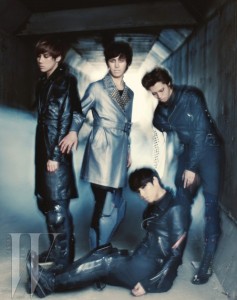 Gaya: I think that being in a metropolitan area, K-pop does have a bit more of a presence; there are so many different people with different interests, and all living in such a small area that some kind of intermixing is bound to happen. It’d be harder to introduce something new in an area where most of the people are the same (to put it rather simplistically), but not impossible; after all, Antonia, you live where you do and you’re a K-pop fan.
Gaya: I think that being in a metropolitan area, K-pop does have a bit more of a presence; there are so many different people with different interests, and all living in such a small area that some kind of intermixing is bound to happen. It’d be harder to introduce something new in an area where most of the people are the same (to put it rather simplistically), but not impossible; after all, Antonia, you live where you do and you’re a K-pop fan.
Bethany: Because I live in a university town in North Carolina, K-pop actually does pop up around me due to the diversity of the people I am surrounded by. I attend a school that has an unusually high percentage of Asians, so I have friends who listen to K-pop or watch Korean dramas on a regular basis. We even have events that allow Asian students at the school to showcase their culture, which, of course, always results in a few girls getting together and learning some K-pop dances to perform. In fact, it was one of my friends here who introduced me to Seoulbeats last year. Another one of my friends bought me an Infinite CD from Korea when he went to visit over spring break. However, with that said, I’ve also lived in a less diverse town in North Carolina, and K-pop was pretty much nonexistent there.
In North Carolina, there is very little, if any, coverage of K-pop. If I wanted to go to a K-pop concert, I’d have to travel to Atlanta or DC or even New York City for a weekend. It makes sense that there’s less coverage of K-pop here though, because while the percentage of Asian Americans living in North Carolina isn’t the smallest out there, most of them are concentrated in one area. But now that there are more Asian American teenagers in that area, Korean pop culture is becoming more and more popular.
Natalie: K-pop is nonexistent where I live. I’ve tried looking for people that like it but so far I get a lot of confused and disinterested looks whenever I bring up K-pop. Even in Portland, Oregon, which has a lot of Asians, I don’t see or hear K-pop. But because K-pop is unknown in the area that I live, I never hear any misconceptions about it from the media or people around me. Most often, I see misconceptions of K-pop online from major news websites and western music sites. Generally, the misunderstandings aren’t very big but strongly noticeable; there was once this hipster website who in passing credited Hyuna for having wonderful vocals. Typically, they get information about the idol system or idol groups wrong. It’s like a typical, everyday K-pop fan described a group or system to them and they took the fan’s word for it without doing much research or actually analyzing the idol system or idols. Whenever I see these mistakes, I get a little annoyed but brush it off. It’s not like the news story or article was big, anyway.
Salima: The first time I saw a K-pop news headline was in the New York Times. It was in regards to SMTown Live in NY and as some of you may remember, the headline read, “Korean Pop Machine, Running on Innocence and Hair Gel.” The reason I remember the headline is because I bought the actual newspaper (something I’ve never done in my entire life) and cut out the article and now it rests triumphantly on my wall. I live in Los Angeles so I couldn’t attend the show, but lived vicariously through the review in the newspaper.
The headline just about killed me. The idea that K-pop runs partly on “hair gel” was hilarious because when I think K-pop, I don’t think of hair gel. But if someone who is unfamiliar with the genre experiences boy groups like SHINee and Super Junior for the first time, they think back to the days when the Backstreet Boys and N’Sync ruled the charts. They look at the crowds of screaming teenage fans and think back to when Westlife and Boyzone were able to evoke the same kinds of reactions. And what was a staple of boy bands back in those days? That’s right: hair gel.
So I think it’s interesting to see Western journalists try to navigate this odd phenomenon that is K-pop and for them to try and relate it back to what we’re already familiar with. But the culture of K-pop is a different beast altogether. And hair gel ain’t no match for it.
 Ree: Gaya pretty much covered all of my K-pop life in Sydney. I tune in every now and then to SBS Popasia, and once I turned on the TV and Hyuna’s “Bubble Pop” music video was playing. Generally speaking, I wouldn’t say K-pop is everywhere, but it sure is popular. I live in the more culturally diverse part of Sydney (or “low socio-economic” as the government likes to call it, hohoho), so basically you have these small Asian stores like Morning Glory playing K-pop music and even selling albums and whatnot. You also used to see advertisements for the Sydney K-pop Fest around Burwood back when they were promoting it.
Ree: Gaya pretty much covered all of my K-pop life in Sydney. I tune in every now and then to SBS Popasia, and once I turned on the TV and Hyuna’s “Bubble Pop” music video was playing. Generally speaking, I wouldn’t say K-pop is everywhere, but it sure is popular. I live in the more culturally diverse part of Sydney (or “low socio-economic” as the government likes to call it, hohoho), so basically you have these small Asian stores like Morning Glory playing K-pop music and even selling albums and whatnot. You also used to see advertisements for the Sydney K-pop Fest around Burwood back when they were promoting it.
I’d say K-pop is sort of like a fad at the moment, because a whole lot of people I know are aware of it these days, which is more than I can say a few years ago. I mean Sunrise even did a small segment on K-Pop — so while it’s not mainstream, I would say it is a very very large niche market. To be honest, I’m sort of unnerved at how popular its become, family friends who I never expected to get into K-pop are now taking Korean classes.
I don’t really have much to write, because Gaya stole all my thunder, but just yeah, K-pop is pretty big. I mean, in the CBD I can hear familiar K-pop songs playing and I can buy K-dramas and albums with little problem.
Although, one thing that did sort of upset me happened last year. I used to be really big on J-pop and Anime. I’m not as into it now, but every year I attend an anime/Japanese culture convention in the city called Animania. Every year that I’ve been to Animania they usually have a dance competition going on where they’d dance to cracky J-pop and DDR music. Anyway, I went to Animania again last year, and too my surprise, they had K-pop music blasting away in the background. In fact, the dance competitions and shows were made up of 85% K-pop music, 10% K-pop gone J-pop music, and only about 5% actual J-pop music. Although it shouldn’t have actually shocked me, I will admit I was a bit upset over it. But that could just be me being petty.
Michelle: So the two Aussies on the team pretty much covered most of it, but hey, I figure that I should at least share my own experiences.
SBS Popasia popped up around when K-pop Fest arrived and pretty much carried along the building hype at the time. Personally, I think the show should really be changed to ‘SBS Pop Korea’ considering the amount of it dedicated to K-pop. Admittedly, I don’t watch it any more. My Sunday mornings are usually dedicated to sleeping in. Even so, K-pop seems to be taking hold in the nooks and crannies of Australia, or at least, Sydney, because that’s where I live. How much exposure to K-pop though, really depends on the crowd you hang out with. I had plenty of opportunity to get into K-pop for the past few years, considering that the majority of people I hang out with are Asian — and I’d say this is determined by a number of factors, such as school environment and living area, not just who I choose I surround myself with. And yes, as Ree’s said, there are a fair number of stores which cater to K-pop needs. Only this week, I stumbled across a fairly new Asian media-dedicated store.
The store front was plastered with K-pop posters, ranging from the big names like SNSD and Big Bang to relatively unknown rookies like B1A4 and Boyfriend. What’s more, they even had a section dedicated to merchandise, like shirts and mobile phone key chains. (To any Sydney-siders reading this, leave the B1A4 merchandise for me — I plan to strip that store of all the B1A4 they have) The store also catered to K-dramas and the Chinese/Japanese stock that it had paled in comparison in terms of quantity, honestly. So really, it’s quite obvious in some areas here that K-pop is big. It’s still an entertainment form that caters to a minority, but awareness for it is growing. And yes, as Ree has pointed out above, K-pop seems to be a fad right now.
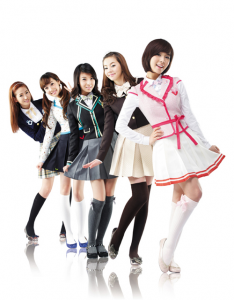 Kimberley: Being in Southeast Asia, I’d say K-pop’s progression here has been moving at a similar pace to that in Malaysia, Indonesia and Thailand. Given that we’re a smaller population in Singapore, the effects of the Hallyu wave did come and go like hot and cold trends in the beginning. There was no sort of widespread fame, or any real viral effect of K-pop on Singaporeans. Taking into account that we’re a multicultural state, I think that kinda explains it; deferring tastes in music, the way pop-culture is represented in the various mediums (English, Mandarin, Malay and Tamil), makes it harder to access the country as a whole. It took awhile before it was apparent that Singaporeans were really getting into K-pop , and when I say this, I mean listening to more than 1-2 bands in Korean pop. We really got hit about 2-3 years ago when Wonder Girls took their ’08 hit overseas. The fans skipped out on Girls’ Generation’s “Gee” though, which I found peculiar. By the time SuJu’s “Sorry Sorry” came around, it was a full-on craze.
Kimberley: Being in Southeast Asia, I’d say K-pop’s progression here has been moving at a similar pace to that in Malaysia, Indonesia and Thailand. Given that we’re a smaller population in Singapore, the effects of the Hallyu wave did come and go like hot and cold trends in the beginning. There was no sort of widespread fame, or any real viral effect of K-pop on Singaporeans. Taking into account that we’re a multicultural state, I think that kinda explains it; deferring tastes in music, the way pop-culture is represented in the various mediums (English, Mandarin, Malay and Tamil), makes it harder to access the country as a whole. It took awhile before it was apparent that Singaporeans were really getting into K-pop , and when I say this, I mean listening to more than 1-2 bands in Korean pop. We really got hit about 2-3 years ago when Wonder Girls took their ’08 hit overseas. The fans skipped out on Girls’ Generation’s “Gee” though, which I found peculiar. By the time SuJu’s “Sorry Sorry” came around, it was a full-on craze.
It was quite a laugh in the beginning when the newsies started picking up on this fast-growing fad. From what I recall, the local paper reported on SS501‘s extreme popularity in Korea. They missed out on big names like TVXQ, Big Bang, etc. For one of the first times ever, I could actually see how much research went into an editorial.
At present, I’d say the local media is more (or even very) accepting of the Hallyu wave. Showcases/fan-meetings, concerts, festivals and such are given generous reportage in several news mediums. Hallyu/K-pop has its own dedicated section/page/channel on accredited online portals. Papers with the biggest local circulations have moved into the social media sphere and their timelines contain the occasional blasts of “T-ara adds one more member…”, “MBLAQ to tour Asia…”, etc. This paints a really odd picture since I’m not sure how this falls in with other mainstream news. The Straits Times, our national newspaper, and Singapore-based Asia-wide news channel, Channel News Asia, have been tweeting in this manner for awhile now and Maryse and I are always slightly flabbergasted when we see these updates pop up. You’d think that maybe the population’s genuinely interested in Korean pop news but I’d say this is only true to a certain extent.
I’ve been to a fair share of Korean events and I can roughly tell what turnout trends we have here. Evidently, as the Chinese make up more than 70% of the population, they make up most of the crowd. Then comes a significant number of Malays and the Indians are usually a handful. With the growing number of foreign students coming from China and Indonesia, as well as working professionals from Philippines, these other groups make up a smaller handful in general audiences. I think this directly reflects how people receive their (K-pop) news, really. I’m not familiar with the content of Malay and Indian Tamil news but at the events that I go to, there are little or no members of the media representing these groups. In terms of any language other than English, our Chinese news mediums cover more K-pop than the others.
When it comes to day-to-day stuff, I’d say some of my friends are quite attuned to Hallyu goings-on. They watch more of the variety shows and occasionally listen to the music. We’ve got Karaoke bars well-stocked with all the latest tunes, malls dedicated to all-things-Korean, Korean culture festivals and Korean marts dotting the island, so I guess you’d have to be living under a rock to not run into something Hallyu-related at all. Running Man‘s recently gotten quite big in Singapore too. One of our free-to-air Chinese channels now broadcasts the program on a weekly basis. I think it’s a first, none of the music shows have made it to mainstream TV. On that, we’ve got KBS World, a free channel that provides a watered down schedule of the original KBS programs. And we’ve got Channel ONE which is a renamed channel for all things SBS, also with a simplified listing. ONE has the added touch of Malay subtitles. So that’s that about the feel and general reception!
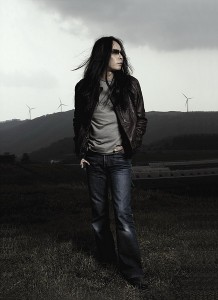 Justin: I live in a town in Georgia that could be considered a “K-town,” and me being Korean makes “Hallyu” just ordinary life like Hollywood is to Americans. I see Koreans all over the place and Korean music is somewhere along those lines. My non-Korean friends know some Korean songs, mainly “Bubble Pop” and “Gee.” They like it, but it’s not like they are going out of their way just to know the latest K-pop song. Among my Korean friends, most don’t even bother with it because it’s too “mainstream,” but they listen to old school material like Boohwal or Korean hip-hop–not idol “rap.”
Justin: I live in a town in Georgia that could be considered a “K-town,” and me being Korean makes “Hallyu” just ordinary life like Hollywood is to Americans. I see Koreans all over the place and Korean music is somewhere along those lines. My non-Korean friends know some Korean songs, mainly “Bubble Pop” and “Gee.” They like it, but it’s not like they are going out of their way just to know the latest K-pop song. Among my Korean friends, most don’t even bother with it because it’s too “mainstream,” but they listen to old school material like Boohwal or Korean hip-hop–not idol “rap.”
Fannie: From the places that I’ve lived before–namely suburbia near Chicago and near DC–the main pattern that I’ve found is that denser the population of Asians in the area (doesn’t matter what type of Asian), the more likely that you will come across someone talking about K-pop. Among Asian-Americans in particular, and especially those still in school and ESPECIALLY those who hang out almost exclusively with other Asian-American peers, there is a much higher probability of them being into K-pop. It’s also a given that places like Koreatown and Asian stationary shops are going have some K-pop stock.
For Americans that are not in direct contact with Asians all the time, it is far less likely that they’re familiar with K-pop. Out in the general public, there really isn’t much indication of Hallyu influence at all. Every now and then there will be a mention in the news media, but not only are these mentions few and far between (although admittedly becoming more frequent as time goes on), but the only people that really are aware of these articles and pay special attention to them are the people who are already into K-pop to begin with. Media conglomerates churn out thousands of articles and reports each day; it’s easy for the one or two articles on K-pop to get lost in the mix.
Basically, if you want to reach out and look for evidence of the Hallyu touch, it’s there (we get an Arirang channel on basic cable as well) but you don’t go out of your way and and look for it yourself, chances of you coming in contact with it can be slim. The netizen K-pop-iverse went crazy when SNSD went on Dave Letterman, but well, lets just say that no one in target pop music demographic watches Dave Letterman. I do think that some of the younger kids are aware, at least, of the existence of the Wonder Girls, though.
Also, I’ve noticed a similar phenomenon to what Justin mentioned — I’ve found that for Koreans that are less-Americanized (for example, those who are here on a student visa to get a US college degree before returning to Korea), they are less likely to be into the mainstream K-pop machine and more likely to be into indie artists and bands. It really makes me wonder how much even the K-pop wave on their home turf has been misrepresented to international audiences. I mean, it’s easy to assume that all the teenagers and young adults in Korea are into mainstream K-pop, right? But is that really the case? It’s really interesting food for thought.
Johnelle: Hallyu’s influence in Hawaii is a bit different than other places in the US. Due to our geographical location in the middle of the Pacific and long history with Asia, there’s a considerable amount of influence from many Asian ethnicities on our “local” culture. Hawaii is also usually exposed to trends in Asia before the mainland US. Of the prominent Asian cultures (Chinese, Japanese, Filipino, and Korean) in Hawaii — most of whose ancestors came to Hawaii mainly as plantation workers — the growth of the Korean presence in Hawaii has been the most recent. I grew up knowing of kimchi and the song “Arirang,” but other than that knew nothing much of Korea or Korean culture until recently.
While some off the first Korean supermarkets in Hawaii opened in the late 70s, it wasn’t until the 80s that Korean cultural influences started really making an impact in Hawaii with the emergence in popularity of Korean food, which some patterned to fit Hawaii’s ‘plate lunch’ lifestyle while others like Sorabol introduced traditional Korean food to Hawaii. What also happened in the 80s to promote Korean culture was the start of KBFD, a local television station that airs Korean programming. While at first KBFD’s audience was mostly made up of Koreans living in Hawaii, now tons of Hawaii residents, Korean or otherwise, tune in to watch their favorite K-dramas.
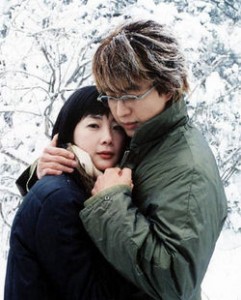 Hallyu’s influence made the biggest impact in Hawaii in the 2000s and really began with the booming popularity of K-dramas from the time of Winter Sonata in 2002. Within the last 10 years tons of Korean restaurants and stores (even a couple of noraebangs) have opened along the area of Keeaumoku Street to the point that locals call the area “Koreamoku.” These places have seen an increased popularity as K-drama fans seek out dishes that they’ve seen in their fave K-dramas. There are Korean supermarkets like Queens and Palama and even the Japanese chain Don Quijote that have Korean cosmetic outlets (like the local store Beauty Touch) in them and areas where K-drama DVDs, K-pop CDs and K-pop merchandise are sold, although the selection and supply are limited to my dismay. What is also telling of Hallyu’s hold on Hawaii: retailers such as Costco, Sam’s Club, and Target all carry some titles of newly released popular K-dramas and you can also borrow K-dramas at Hawaii public libraries. Korean language classes at the University of Hawaii campuses have seen an increase in enrollment, there are Korean language classes in Hawaii public high schools, and now several adult education classes at various high schools’ night schools offer Korean language. This July, will also mark the 11th Korean Festival in Hawaii. Tours to South Korea from Hawaii, especially K-drama packages. are often sold out. And since 2010, when the VISA restrictions were lifted for travel to and from the US and South Korea, Hawaii has actively pursued a burgeoning South Korean tourism market.
Hallyu’s influence made the biggest impact in Hawaii in the 2000s and really began with the booming popularity of K-dramas from the time of Winter Sonata in 2002. Within the last 10 years tons of Korean restaurants and stores (even a couple of noraebangs) have opened along the area of Keeaumoku Street to the point that locals call the area “Koreamoku.” These places have seen an increased popularity as K-drama fans seek out dishes that they’ve seen in their fave K-dramas. There are Korean supermarkets like Queens and Palama and even the Japanese chain Don Quijote that have Korean cosmetic outlets (like the local store Beauty Touch) in them and areas where K-drama DVDs, K-pop CDs and K-pop merchandise are sold, although the selection and supply are limited to my dismay. What is also telling of Hallyu’s hold on Hawaii: retailers such as Costco, Sam’s Club, and Target all carry some titles of newly released popular K-dramas and you can also borrow K-dramas at Hawaii public libraries. Korean language classes at the University of Hawaii campuses have seen an increase in enrollment, there are Korean language classes in Hawaii public high schools, and now several adult education classes at various high schools’ night schools offer Korean language. This July, will also mark the 11th Korean Festival in Hawaii. Tours to South Korea from Hawaii, especially K-drama packages. are often sold out. And since 2010, when the VISA restrictions were lifted for travel to and from the US and South Korea, Hawaii has actively pursued a burgeoning South Korean tourism market.
While K-dramas are alive and well in Hawaii, K-pop is still growing. Many fans of K-dramas end up getting to know K-pop when they find out a favorite actor is actually a musician, myself included. Others find K-pop through the internet and YouTube. So while K-pop isn’t as huge here as K-dramas it is growing–a sure sign of that, in December of last year we got our first 24 hour K-pop FM radio station, KORL 107.5. Our local newspaper, the Star Advertiser periodically has a K-drama or K-pop related story, and the manager of KBFD does a weekly recap of the K-dramas airing locally. Most recently, Hawaii lawmakers have proposed designating the larger “Koreamoku” area as an ‘official’ Koreatown in Hawaii. Now if that isn’t showing the influence of Hallyu in Hawaii, I don’t know what is.
What’s lacking is the amount of K-pop concerts that come to Hawaii. We’ve had a few concerts of older singers (e.g. Kim Bum-soo) and some idols (Wonder Girls), but for as many concerts as we have had, we have almost as much that have been cancelled (Rain, JYJ, K-pop in Honolulu). I believe there is a fan base here for K-pop concerts, but some of the organizers of these concerts have shady, so fans have been leery of buying tickets at times.
Personally, I’m exposed to K-pop everyday whether it be for writing at Seoulbeats to talking to my ‘aunty’ type friends at work about K-dramas or getting texts from my co-worker’s 13 year old daughter, Camryn, for info on her fave idols (Boyfriend) or what would be the best K-dramas to watch during her spring break. Now, if only I could just convince YG to come to Hawaii for Big Bang’s ALIVE Tour–must use my Jedi mind trick again… Hawaii. Hawaii. Hawaii.
 Subi: I’m currently at Cornell and Cornell attracts a mass of Korean students, both domestic and international and we’ve actually had quite a few celebrity-related folks attend here. G.NA‘s cousin is Class of 2013, Taecyeon‘s younger sister is graduating this year, and I’m set to meet Yunho‘s cousin this Saturday night. And there are definitely your fair share of Korea-philes. But that being said, it definitely does not permeate the recreational culture here. Your average person may know a song or two and they may vaguely know the tune but it’s definitely not their poison of choice. It’s like any other kind of niche entertainment here. As many people listen to K-pop as people listen to Scandinavian bands and watch Nollywood films. But a university is also not a representative sample. This is a place for the sharing of ideas (or music, I suppose) and when I think of about places across America that I’ve been, unless the Korean population is bumpin, no one can recognize a single name on my K-pop playlists.
Subi: I’m currently at Cornell and Cornell attracts a mass of Korean students, both domestic and international and we’ve actually had quite a few celebrity-related folks attend here. G.NA‘s cousin is Class of 2013, Taecyeon‘s younger sister is graduating this year, and I’m set to meet Yunho‘s cousin this Saturday night. And there are definitely your fair share of Korea-philes. But that being said, it definitely does not permeate the recreational culture here. Your average person may know a song or two and they may vaguely know the tune but it’s definitely not their poison of choice. It’s like any other kind of niche entertainment here. As many people listen to K-pop as people listen to Scandinavian bands and watch Nollywood films. But a university is also not a representative sample. This is a place for the sharing of ideas (or music, I suppose) and when I think of about places across America that I’ve been, unless the Korean population is bumpin, no one can recognize a single name on my K-pop playlists.
Gil: I currently live in the midwest of America where the Hallyu Wave is practically non-existent. I think all the corn and soybeans interfere with the permeation of Korean culture. But since I live in a suburb with a high Asian population, I do run into K-pop here and there. There are students at my school who listen to K-pop and know about it though but I only know about it when I bring it up into conversation. I hear Big Bang’s “Lollipop” play while the breakdancing team practices or I saw my male friend dance to KARA‘s “Step” in the middle of the hallway but that’s about it. It is interesting to see that there are non-Koreans who are interested in K-pop it’s not an overwhelming population but it is there.
What Kim said about Singapore can be applied to Malaysia as well. I am originally from Malaysia and I can see the expansion of K-pop there, but I was too busy eating to really notice the last time I went there.
Dana: Frankly, Hallyu’s influence in Boston is almost nonexistent, unless you’re (a) really looking for it, or (b) in Allston, which is the closest thing that Boston’s got to a K-town. There are a couple of great bars that play K-pop music videos, and they always distract me when I go there with friends.
Because I’m involved in Korean studies, I’d say that Korean pop culture makes its way far more into my life than it does the average individual’s. That being said, though, there’s a fairly substantial population of both native Korean and Korean-American students in this area, and Korea-connected clubs and organizations one campus do a lot of really fascinating promotional events (apparently, JYP came here a few years ago). Unfortunately, these events usually just wind up attracting other Koreans; they don’t quite have the same broad appeal as do events about China and Japan. It’s a bit of a vicious cycle; because Korea-related events don’t draw in huge crowds (and the number of non-Koreans they manage to bring in is usually incredibly small), they wind up not having the chance to influence students and spark others’ interest in Korea. In turn, because few foreigners ever show up, the events become increasingly more Korean-centric and thus less appealing to foreigners. And so it goes.
There are always glimmers of hope, though. K-pop’s been getting a lot more attention in American publications, and occasionally non-Korean friends who know that I follow K-pop will approach me and ask me about it. One of my hallmates is literally obsessed with EXO-K. She’s added the entire mini-album onto her playlist for long nights stuck at the architecture building. Success!
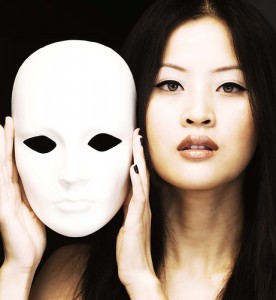 Patricia: If Hallyu is nonexistent in Boston, imagine what it must be like in suburbia outside of Boston where I go to school. To be fair though, my school boasts an Asian student population of over 25%, and I’ve found that what previous writers said about K-pop and young Asian-Americans holds true here, too. As always, there’s a weird dynamic where almost everyone here knows what K-pop is, but because it’s so well-known, the camps between die-hard K-pop lovers and K-pop haters is pretty clearly split, and it’s easy for others to cast judgment on you for liking K-pop. It’s kind of sad — I’m an East Asian Studies student, and opportunities to connect K-pop with the things I learn in school present themselves quite often. But no matter how good your paper or presentation might be, there will always be more than a few people side-eyeing you for picking such an “unintellectual” topic. The funny thing about this is that if nobody knew about K-pop at my school, no one would bat an eye; rather, people might be MORE interested because you’re talking about something that, if presented in the right way, can seem very avant-garde and fascinating. But because K-pop is so well-known here, most everyone has preconceived judgments about it which makes it very difficult for people who appreciate K-pop in a way that doesn’t fit into the typical fangirl stereotype to be taken seriously.
Patricia: If Hallyu is nonexistent in Boston, imagine what it must be like in suburbia outside of Boston where I go to school. To be fair though, my school boasts an Asian student population of over 25%, and I’ve found that what previous writers said about K-pop and young Asian-Americans holds true here, too. As always, there’s a weird dynamic where almost everyone here knows what K-pop is, but because it’s so well-known, the camps between die-hard K-pop lovers and K-pop haters is pretty clearly split, and it’s easy for others to cast judgment on you for liking K-pop. It’s kind of sad — I’m an East Asian Studies student, and opportunities to connect K-pop with the things I learn in school present themselves quite often. But no matter how good your paper or presentation might be, there will always be more than a few people side-eyeing you for picking such an “unintellectual” topic. The funny thing about this is that if nobody knew about K-pop at my school, no one would bat an eye; rather, people might be MORE interested because you’re talking about something that, if presented in the right way, can seem very avant-garde and fascinating. But because K-pop is so well-known here, most everyone has preconceived judgments about it which makes it very difficult for people who appreciate K-pop in a way that doesn’t fit into the typical fangirl stereotype to be taken seriously.
(Then again, maybe this is just your typical, higher education intellectual elitism at work.)
My K-pop experience growing up in suburban Connecticut was a different story. I first started getting into K-pop when I was a high school junior, and most of my high school years were spent being an obnoxious and embarrassingly spazzy fangirl with absolutely no shame. But for whatever reason, most everyone around me didn’t mind — and mind you, I grew up in an extremely white town with an extremely low percentage of Asians (less than 3 percent of the total population) and an equally low percentage of people who actually had any real awareness of Asian culture apart from the campy stereotypes. On top of that, everyone hated pop music and only listened to the likes of Incubus and whatever no-name band was playing in the sketchy, 800-person capacity “concert venue” two towns over that weekend. The high school favorite band was State Radio, and I will eat my hat if any Seoulbeats reader knows who they are.
At the same time, I’m willing to bet that most of the people in my town couldn’t point out the Korean peninsula on a map, and most of my classmates still found it funny to ask “North or South?” when someone mentions the word “Korea” without its proper locational-slash-ideological-slash-political designation. I still hold a lot of personal gripes with my high school because while many people called themselves liberal and culturally “aware,” there was still a ton of prejudice and ignorance amongst the entire student body, and the worst part of this is that most of us were so convinced of our “tolerance” and “cultural awareness” that we didn’t even acknowledge our ignorance to be that serious, if we acknowledged it at all.
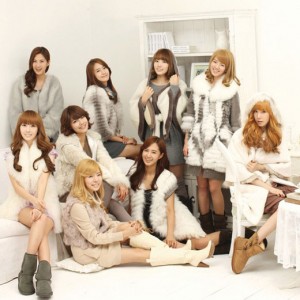 So it stands to reason that when I first “came out of the K-pop closet” in high school, I did so cautiously, and at one point even convinced myself that my interest in K-pop was “acceptable” because no one else in my high school knew about it, and therefore it wasn’t “mainstream.” My high school K-pop mania went to the point where my senior project was on K-pop, but the project was entitled “Korean Popular Culture Through a Socio-Cultural and Journalistic Lens.” Now mind you, at this point I had never taken a single academic course on Asian culture or society (because my high school didn’t offer any), and I was obviously in no position to be doing any project of any sort on a culture with which I had absolutely no solid, academic familiarity. Looking back on it, so much of my project was utter BS, only because I wanted to present something that I loved in a context that would be acceptable and digestable by my otherwise unaccepting peers. And the best part? I got a perfect score on my project, probably because I made myself sound like I was talking about something that no one in my town had ever expressed any interest or knowledge in — namely, Asia. I think someone actually thanked me for “talking about my homeland” after my presentation, despite the fact that I’m Taiwanese, not Korean, and that I was born in the United States. But you can’t ask for too much, right?
So it stands to reason that when I first “came out of the K-pop closet” in high school, I did so cautiously, and at one point even convinced myself that my interest in K-pop was “acceptable” because no one else in my high school knew about it, and therefore it wasn’t “mainstream.” My high school K-pop mania went to the point where my senior project was on K-pop, but the project was entitled “Korean Popular Culture Through a Socio-Cultural and Journalistic Lens.” Now mind you, at this point I had never taken a single academic course on Asian culture or society (because my high school didn’t offer any), and I was obviously in no position to be doing any project of any sort on a culture with which I had absolutely no solid, academic familiarity. Looking back on it, so much of my project was utter BS, only because I wanted to present something that I loved in a context that would be acceptable and digestable by my otherwise unaccepting peers. And the best part? I got a perfect score on my project, probably because I made myself sound like I was talking about something that no one in my town had ever expressed any interest or knowledge in — namely, Asia. I think someone actually thanked me for “talking about my homeland” after my presentation, despite the fact that I’m Taiwanese, not Korean, and that I was born in the United States. But you can’t ask for too much, right?
However, K-pop doesn’t lie, and you’d be stupid to think that one could ever pass off K-pop as anything “hipster” or “non-mainstream.” I still got comments from people who laughed at the guys’ feminine features and the girls’ plasticky-ness, or at the 90’s-esque kitschy-ness of the music and choreography. And of course, there were the insensitive, unfunny Asian jokes that were thrown around because of it, and in an environment like that you can’t help but laugh along because who wants to be the one defending the plastic, girly-looking pop stars, right?
It’s sad that my little Connecticut hometown isn’t the first of its kind, and my experiences growing up are what give me the greatest apprehension of K-pop moving to the West, should it ever happen. Admittedly, whenever K-pop gets a mention in the New York Times or the Wall Street Journal, I still post it to Facebook in the hopes of one of my high school classmates seeing it and recognizing K-pop, this mysterious, Asian pop-culture phenomenon that they’ve never seen or heard of before, is actually something to be reckoned. But up until now, that’s proven to be nothing more than a pipe dream.
I should add that 2NE1 did come to my hometown after their concert in New York to visit a fan at a local hospice. I wasn’t around town then (although how inappropriate would it be to stalk a K-pop group when they’re visiting a patient in hospice?!), but man, freak coincidence or what?


